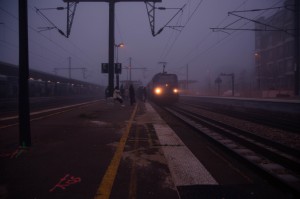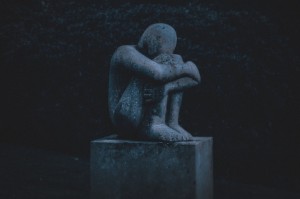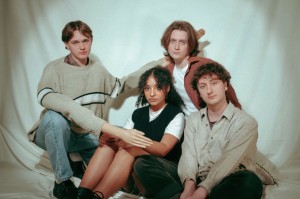Playlist: Michael Lacey
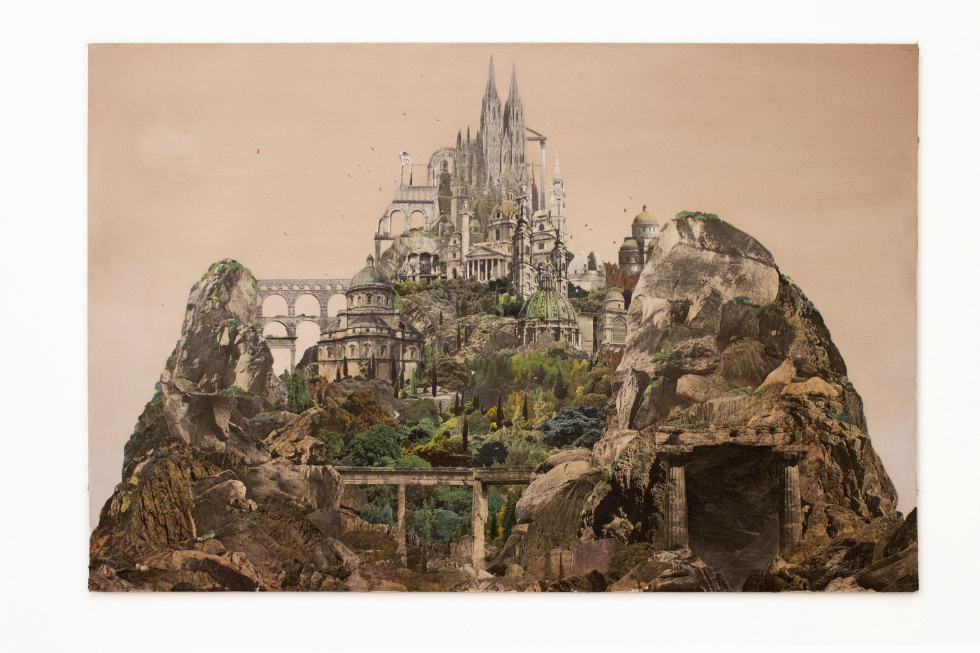
Why do we make music? Here, Michael Lacey traces how an early impulse to have fun eventually led to his creating “reflective, dreamy spaces” inspired by some of the artists on the accompanying playlist…
Earlier this year I released an album of instrumental music called Ritual, debuting it in exhibition called Light Blue at the Royal Standard gallery in Liverpool. The album is eight twinkly, relaxing, ambient tracks, created with an analog synthesizer, a cheap guitar, a load of laptop effects and some weird noises from YouTube. Since I’ve spent recent years making visual art, a few people have asked me how the album came about, so that’s what I’m going to explain here, in extravagant autobiographical detail, and there’s also a playlist of the influences which shaped the project.
I’ll start at the beginning. My family’s half Irish, and I’m the only one who doesn’t play traditional Irish music. I spent a lot of my childhood sitting in pubs, sneaking drinks, watching them and a cast of garrulous misfits storming through tunes on the tin whistle, flute and button accordion. The music was stirring and forceful but not really my thing – what I really took away from it was the propulsive, shared pleasure of playing music with other people, and using it as an excuse for a few drinks.
When I went off to University in Glasgow, I carried this thought with me. I was desperate to experience that same mad buzz I’d grown up watching other people have, and I knew it was traditional to form a band when you went to art school. Before long, me and some friends formed a string of deranged bands, putting tights on our heads, writing lyrics about Star Trek and sex, making a racket in dingy rooms in front of baffled audiences – it was absolutely tremendous fun. There was a certain cachet at the time to being a band from the Glasgow School of Art – the likes of Belle and Sebastian and Franz Ferdinand cast a long shadow – but we were quite determined to squander it, and with it, destroy the prevalent notion that “art school bands” were sensitive, romantic and well-dressed. As a member of The Naughty Men, The Bob Dylans, Senseless Apocalypse, Pork Force etc., I was entirely motivated by having fun.
After a while, though, I started turning into a bit of a perfectionist about the music. I’d get very frustrated with people, and was a bit of a nightmare to practice with (despite my having the meagre technical ability of someone who’d quit piano lessons aged 8 – too boring – and learned a few Radiohead songs on the guitar as a teenager, and had specifically sought out band members who’d never played their instruments before). One of my best mates left the band because I kept yelling at him for not getting the chords right to a song which was about King Kong eating a big banana. It was a bit of a ridiculous situation. Whenever I tried to join another band and relish the shared pleasure of creating music with other human beings once again, my inner dictator would pipe up and ruin it. He would whisper in my ear that the drummer was out of time or something. So I retreated into playing music at home, mostly clumsy renditions of jazz standards on the guitar, and focusing instead on making art.
The art has been going alright but the collages I make are really complicated and take ages, and after a while it starts to do your head in. Playing to myself made for a nice way to relax and keep my mind occupied with something else. I started going to see less traditionally band-centric stuff – Peter Zummo, Rhys Chatham, Ned Sublette and others playing the music of Arthur Russell; London Contemporary Orchestra playing Steve Reich, local talent like Dialect and Immix Ensemble (there have been some fantastic gigs in Liverpool the last few years).
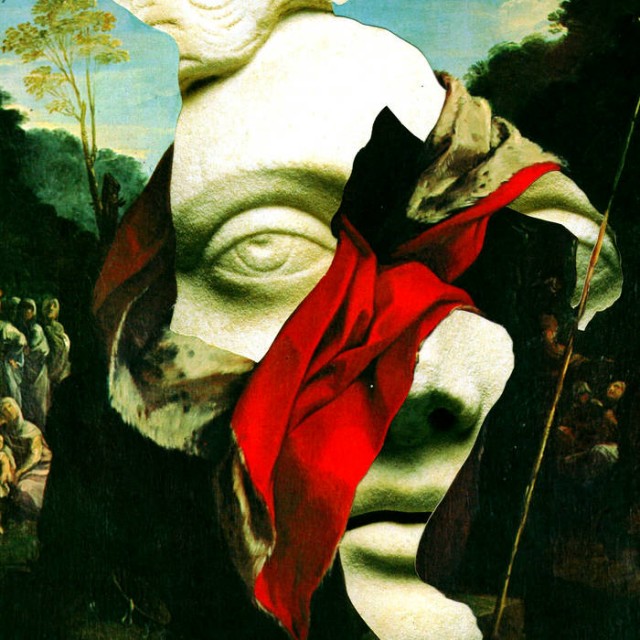
Missing the piano after it moved out of the house along with my sister, and intrigued by the stuff I’d been going to see, in 2017 I bought a Yamaha Reface-CS, an analog physical modelling sound engine with multiple synth and oscillator types. It’s a little keyboard with loads of dials to tweak the sounds, which are more like things you’d hear on late-70s Bowie records than contemporary club bangers. It’s got a multi-track function loop thing, so you can build up tracks with a bassline, chords, melody and so on. I got hooked on this, and it reminded me of something I’d not thought about for decades – when my Mum was still a teacher, sometimes during the holidays we’d get a go of the “school keyboard”, which was mostly exciting to me because it had a sound effects setting with gunshots and space laser sounds. That old, giant keyboard had a similar multi-track function where you could play all the parts of a track yourself, and I spent one Summer (literally, one entire Summer, just after quitting piano lessons) creating a “revamped” version of the theme tune from The Sweeney, deriving deep joy from controlling every single note. This must have been where my musical dictator side got its start.
Every time I talk about my creative practice, I end up reminiscing about my childhood. But I am an adult now, with a girlfriend and everything. I noticed that she would fall asleep whenever I started playing the keyboard, almost immediately. She sometimes has trouble getting to sleep, so I recorded some tracks, as a gift. All my music has this same soporific effect on her and I don’t think she’s heard past the second track on the album.
I was finally, more or less by accident, making music that sounded like the music I would actually go out of my way to listen to. These analog synths are great for conjuring up sounds with the hauntological rattle of Broadcast or the seductive shimmer of Angelo Badalamenti. Before long my sleeping internal musical dictator began to stir, and so a project that began as a sleep aid for one person grew into something more ambitious. After a few little practice EPs, I made an album, and now you can listen to it on the internet, and even give me some money for it, if you’re so moved. A few of the tracks are based on chord sequences from things I wrote for those earlier bands. I enjoy listening to them now and remembering when they had lyrics about murdering everyone you’ve ever met because you ran out of teabags or meeting an alien behind Ainscough’s Mill on the banks of the Leeds to Liverpool Canal.
The sound of the album is the balancing of ambition and resources. I listen to all sorts, and nick bits from all of it, because it’s interesting to see how little resemblance remains once it’s been filtered through my limited skills and equipment. This playlist contains musicians whose work helped me realise what analog synths are capable of, or what instrumental music is capable of, and also things that are just always buzzing round in my head and from which I can trace some impact on the music I write – Francis Lai’s sax-heavy themes from early-90s French cop films (another youthful recollection) for example, because I will always have a fondness for music that makes you quicken your step and peer suspiciously around corners when it comes on your headphones. Like my artwork, I wanted the music to create a reflective, dreamy space, so listened to a lot of soundtracks that captured that feeling. Particularly Michael Andrews’ soundtrack for Miranda July’s Me, You and Everyone We Know, and Shane Carruth’s music for his own Upstream Colour.
If you enjoyed listening to this, old episodes of my neglected radio show for IWFM are archived on mixcloud at this link, and more about my artistic and musical endeavours can be found on my website.
Michael Lacey
Images from top: House For Arnold Bocklin; Ritual album cover, © Michael Lacey



